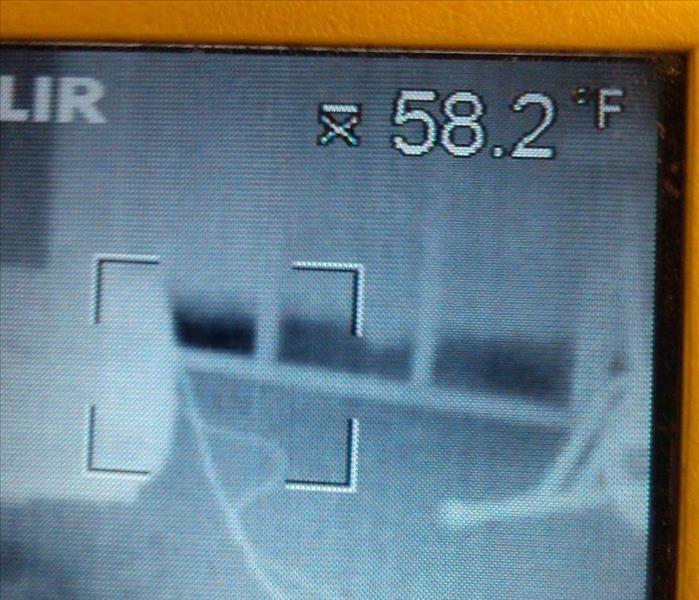Flir infrared inspection and water damage in Woodbury, NJ
Flir infrared inspection and water damage in Woodbury, NJ. Property had water damage in basement from Washer hose. During Infrared inspection, areas were determined with moisture. Walls and structure drying were required. Carpet was removed. Air movers and dehumidifiers were operating for drying out.
The following method can be used to determine the amount of dehumidification, either conventional refrigerant, LGR refrigerant or desiccant, to dry a structure after water damage. These guidelines are based on the IICRC’s S500 standard version 3. 1. Determine the volume of the area that is water damaged and can be isolated from other open areas. Length X Width X Height = Cubic feet of space where dehumidification is required 2. Determine the Class of the Water Damage. Class 1 (least amount of water, absorption and evaporation) Water damage restoration projects that affect only a part of a room or area; or larger areas containing materials that have absorbed minimal moisture. Little or no wet carpet and/or cushion are present. Class 2 (large amount of water, absorption and evaporation) Water damage restoration projects that affect at least an entire room of carpet and cushion (pad). Water has wicked up walls less than 24 inches. There is moisture remaining in structural materials (e.g., plywood particle board, structural wood, VCT, concrete and substructure soil). Class 3 (greatest amount of water, absorption and evaporation) Restoration projects in which water has wicked up walls greater that 24 inches, or it enters from overhead affecting the ceiling , walls, insulation, carpet, cushion, and subfloor. The entire area is saturated. Class 4 (specialty drying situations) These consist of wet materials with very low permeance/porosity (e.g., hardwood, plaster, brick, concrete, light wet concrete and stone).Typically, there are deep pockets of saturation, which require very low relative and specific humidity for drying.
Customer was satisfied with results and drying time.






 24/7 Emergency Service
24/7 Emergency Service
